This deep, rich, Turkish Coffee Recipe, is also known as Greek Coffee and Arab Coffee. The espresso used to make this Turkish coffee recipe is blended with ground cardamon, which gives this coffee its wonderful flavor. Serve some freshly made baklava or Turkish delight with the coffee, along with a tall glass of water.
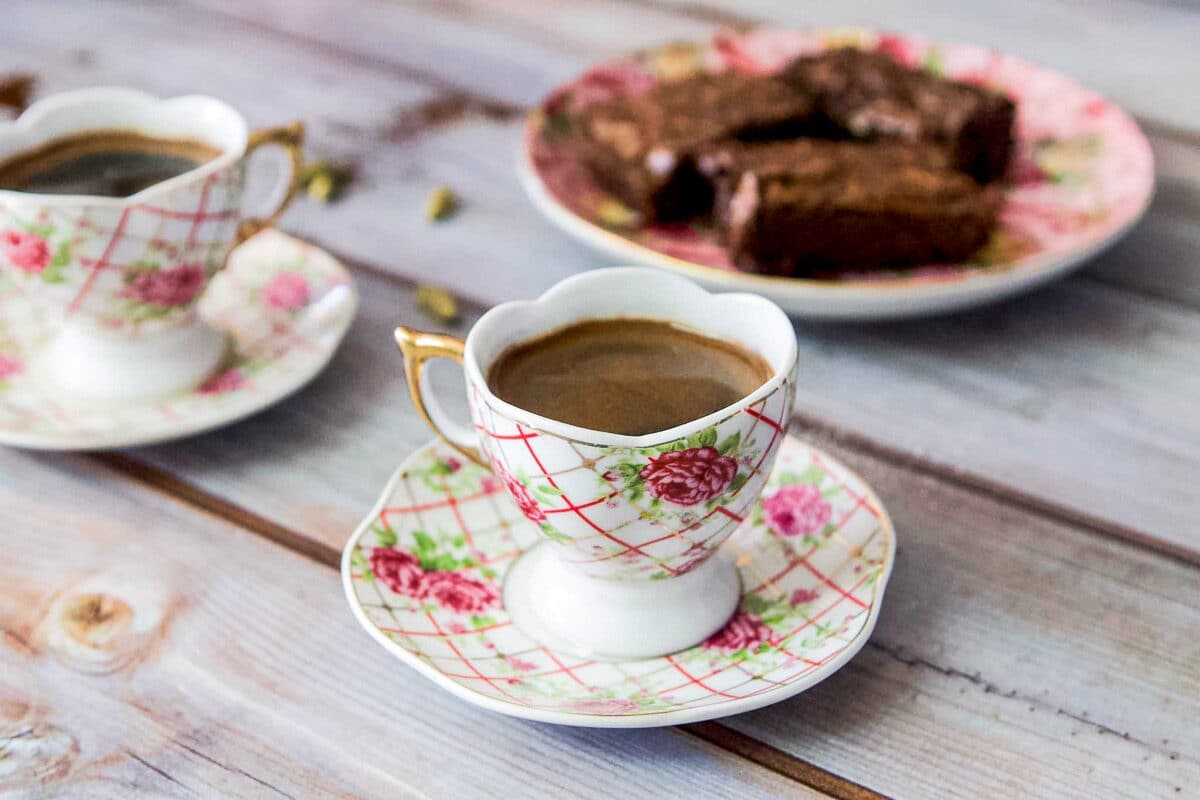
Growing up, this coffee was always referred to as Gahwha in our home. Gahwha is the Arabic word for Turkish Coffee.
It is also widely known as Arab Coffee throughout the Middle East. It is prepared in a Turkish Coffee Maker known as an Ibrik.
I'll never forget the time I served my Greek friend, Jenny, a cup of Turkish coffee. I made the mistake of calling it just that.
Jenny quickly corrected: "You mean, Greek coffee!" Given the history between Greeks and Turks, I'm sure you understand why...So choose your words wisely, depending on who you will be serving!
Jump to:
🛒 What Goes into This Recipe

🔖 Ingredients & Substitutions
- Turkish Coffee Grounds — Finely ground Arab Coffee Beans.
- Cardamom — Cardamom powder or pods are ground in with the coffee beans, giving this coffee its unique flavor.
- Sugar or Sweetener — Turkish coffee is usually prepared with sugar but you can also use the sweetener of your choice, or leave it out completely.
- Water or Milk — Although traditionally water is mixed in with the coffee grounds, there are some who make it with milk instead.
☕️ How to Make Turkish coffee
Step 1: Mix coffee, water, and sugar in an ibrik or Turkish coffee pot.
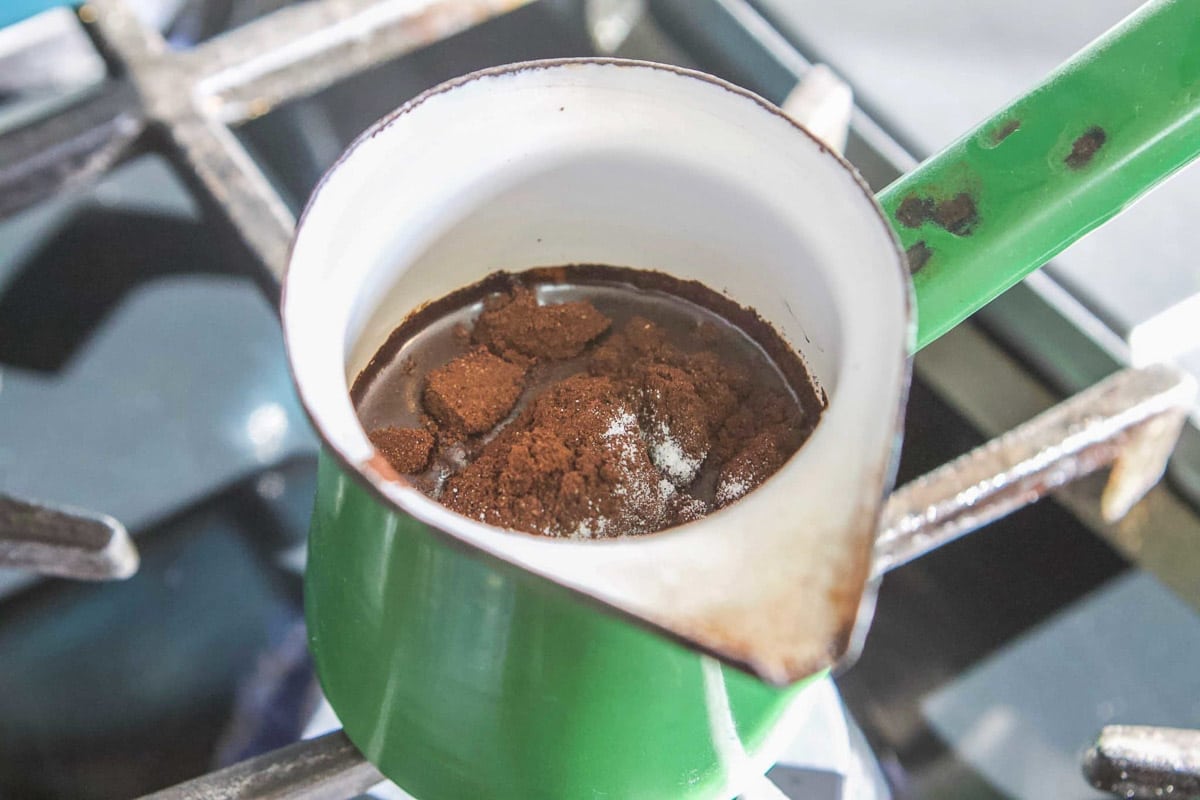
Step 2: Stir over medium flame, occasionally lifting the Turkish coffee pot off of the flame to keep your hand from burning, as you stir.
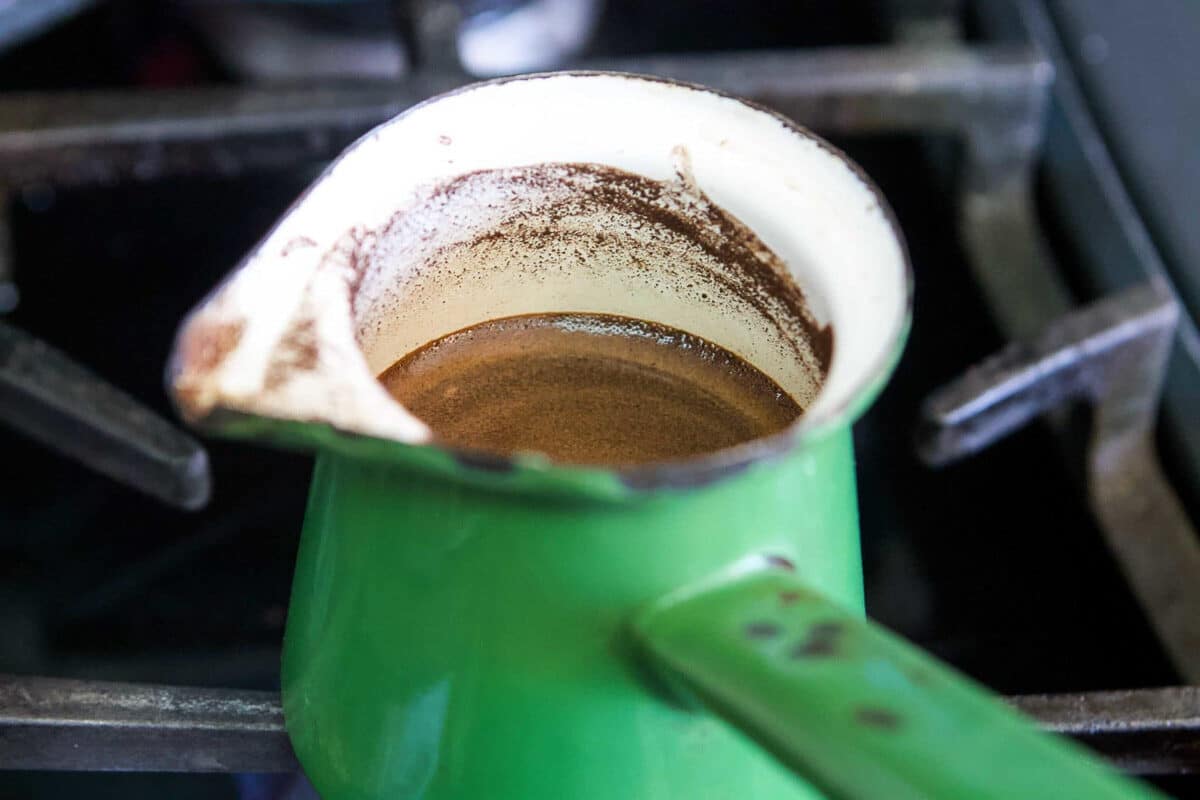
Step 3: When the coffee begins to rise to the surface remove the Turkish coffee pot from heat and allow the coffee to recede. Repeat this step a few times. This is an important step and develops a richer flavor, so don't skip it!
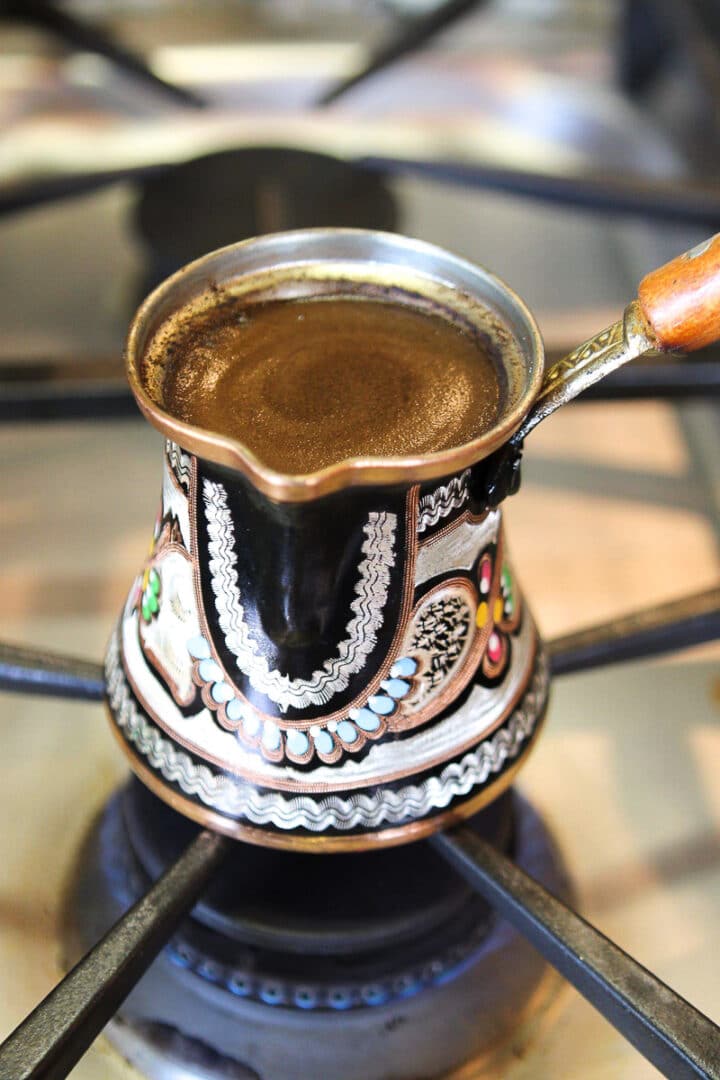
Step 4: Spoon some of the foam into each demitasse cup. Divide the remaining coffee between the two cups.
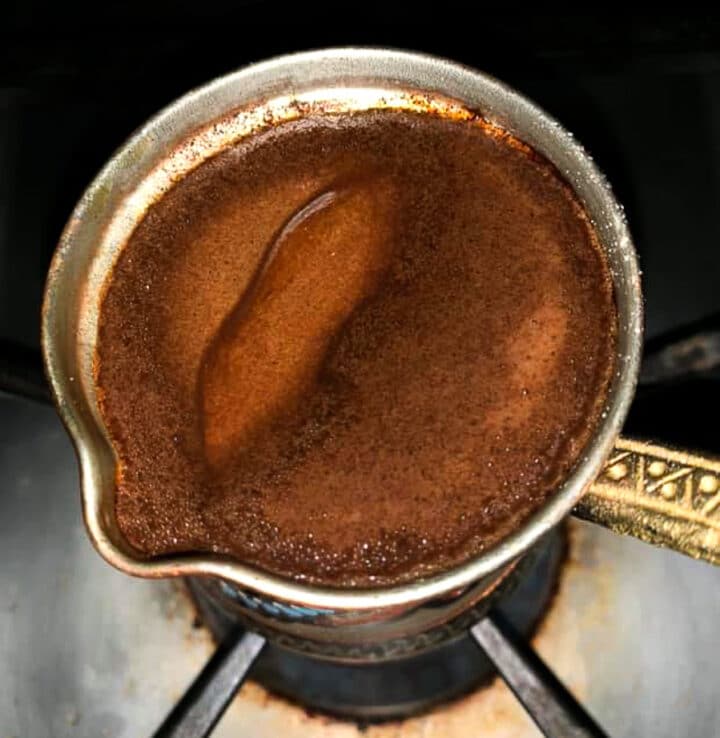
Step 5: Allow the coffee to rest for a minute or two. This will help the sediment to settle to the bottom of the cup. Enjoy you Arab Coffee!
Turkish Coffee in K-Cups
Until recently, I would have said no, you can't get this coffee in K-Cups. However, I recently discovered a local Chaldean family who has mastered the art of making Turkish coffee in K-cups.
After learning about them on Instagram, I decided to try the Levant Blends Turkish coffee K-Cups to see if they were any good.
If you know me at all, it should come as no surprise that the cardamom flavored ChaldoCup was my favorite. My husband, Scott, liked both flavors.
So if you want to cut corners, or try Arabic coffee without investing in an ibrik, give their coffee a try. And yes, you can still read the coffee grounds if you wish.
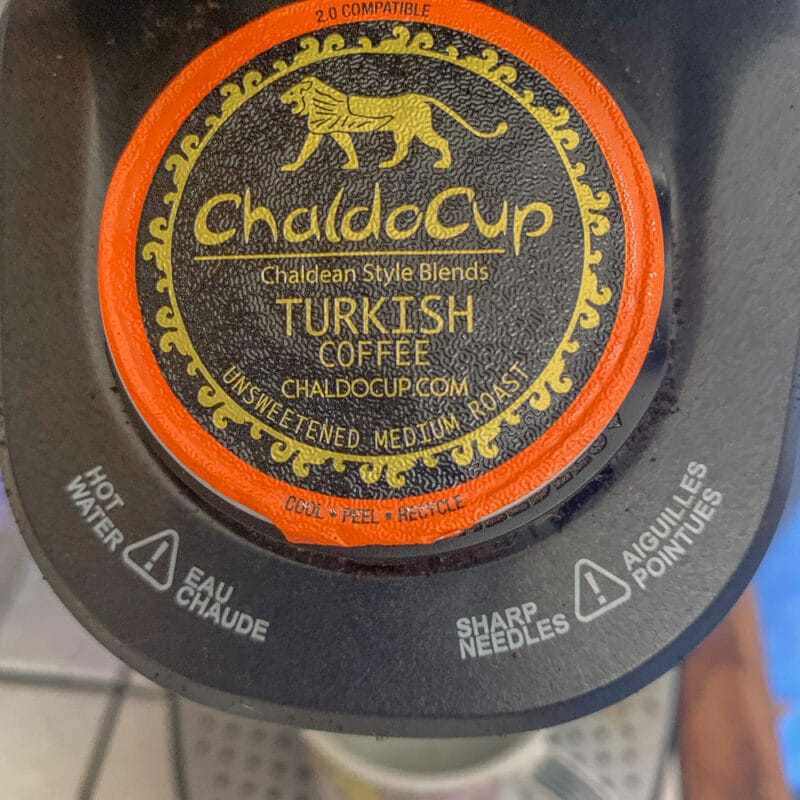
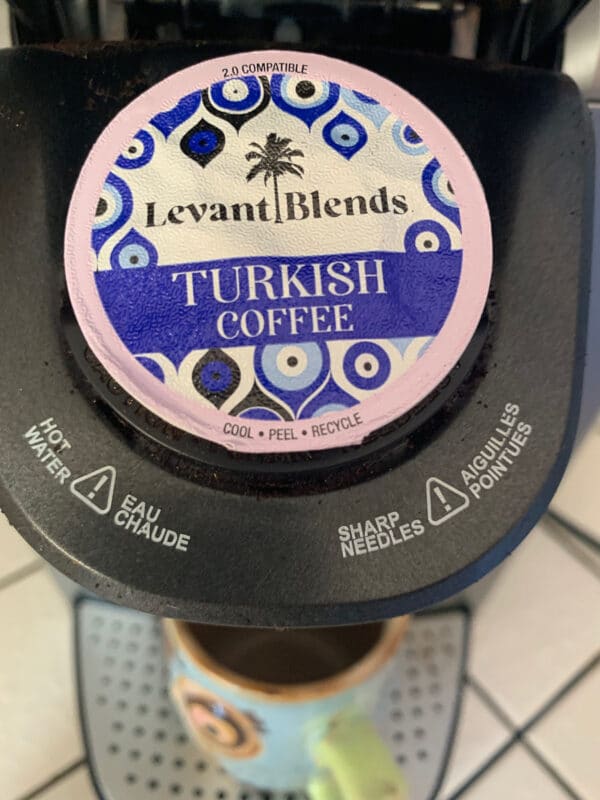
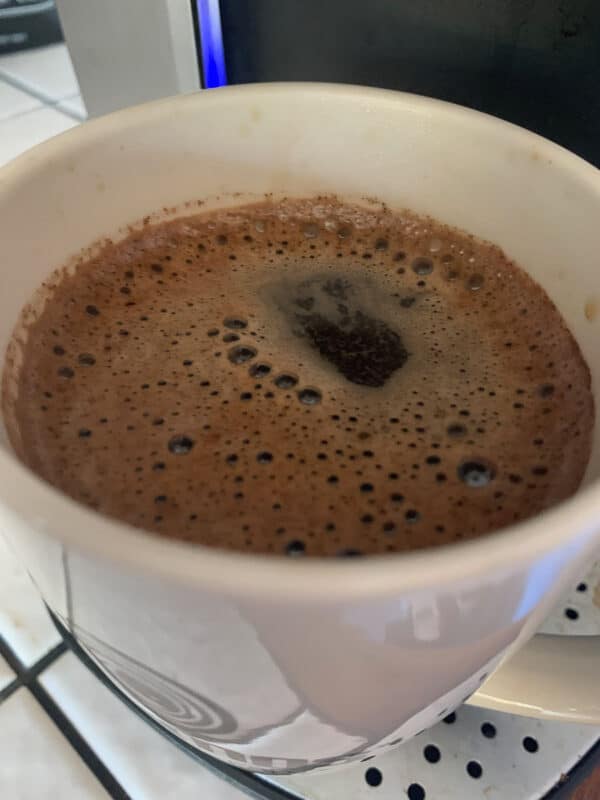
🤷🏻♀️ Recipe FAQs
To make this Turkish Coffee Recipe, you'll need a few ingredients. To start, you'll need the obvious, Turkish/Arabic coffee.
Make sure that the coffee you buy has cardamom ground in; cardamom is the main reason that I'm in love with this coffee!
Aside from coffee, you'll need sugar, or a sweetener, such as Truvia. You will also need an "Ibrik" which is the coffee pot used to make this coffee.
Lastly, you'll need the demitasse cups in which the coffee is served.
You may use espresso cups if you choose to. However, if you don't have the majority of the above-mentioned ingredients or supplies, I would highly recommend this Turkish Coffee Kit which has everything you need!
Turkish coffee is served in special Turkish coffee cups, as mentioned above. The coffee is usually served with a tall glass of ice water, along with something sweet on the side.
This could be anything from baklava, a piece of chocolate, or Turkish Delight. Yes, Turkish delight is actually a thing. They're not an imaginary candy that the witch tempted Edmond with, in the movie The Lion, the Witch, and the Wardrobe.
Turkish Delight is very hard to prepare, so I recommend purchasing it from Amazon.
These days there are many ways to make this coffee. One option that will cost you around $30 is an electric Turkish Coffee maker. This gadget allows you to make Turkish Coffee without burning your hand, as it is plugged in instead of requiring you to stir the coffee over a flame.
A cheaper option is to use a small saucepan. A pot that is narrow and taller is preferred, especially if it has a pouring spout.
A more expensive option (Beko 2 cup Turkish Coffee Maker) can be purchased for around $130. This coffee maker allows you to make up to two cups of coffee at a time using your favorite Turkish coffee blend.
Of course, you can always use Turkish coffee K-Cups. What? You didn't know there was such a thing? I'm here to tell you that not only do they exist, but they're amazing! Keep reading to learn more.
👩🏼🍳 Pro Tips
- To make this Turkish Coffee recipe will need one heaping teaspoon of Turkish coffee, one demitasse cup of water (or ⅓ of a cup), and ½ to 1 tsp. of sugar per cup.
- I make a minimum of two cups at a time, even if I'm the only one having some. To accomplish this, I use 2 demitasse cups of water, 2 heaping spoons of coffee, and 1 teaspoon of sugar (or a packet of Truvia).
- To make more servings, just increase the coffee and water by one part, and the sugar by ½ to 1 part. You might even want less sugar than that, it's a matter of personal preference.
- You will need to lift the ibrik off the flame occasionally to keep your hand from burning, as you stir. Stop stirring when bubbles start forming along the edges of the ibrik, and the foam starts rising to the surface.
- We call the foam that rises to the surface "pata" which means "face" in Assyrian. This foam is highly desirable. Your goal should be to divide the foam between all the servings.
How do you tell fortune with Turkish coffee?
Middle Eastern countries have been telling fortunes with coffee grounds for centuries. When a person finishes drinking their coffee, there is sediment that collects on the bottom.
The cup is covered with the saucer, and swiftly flipped over and set aside for ten minutes or so. During this time, the sediment begins to create a pattern on the walls of the cup as it drains into the saucer.
The cup is then flipped, and "read." Imagination is used to interpret not only what is seen, but what it signifies. This custom varies from those doing it "just for fun" and those who claim to be able to predict the future.
The ones who take this practice seriously divide the cup into sections, each representing a different aspect of your life. One section representing the past, another the future, and different topics including love life, prosperity, and so on...
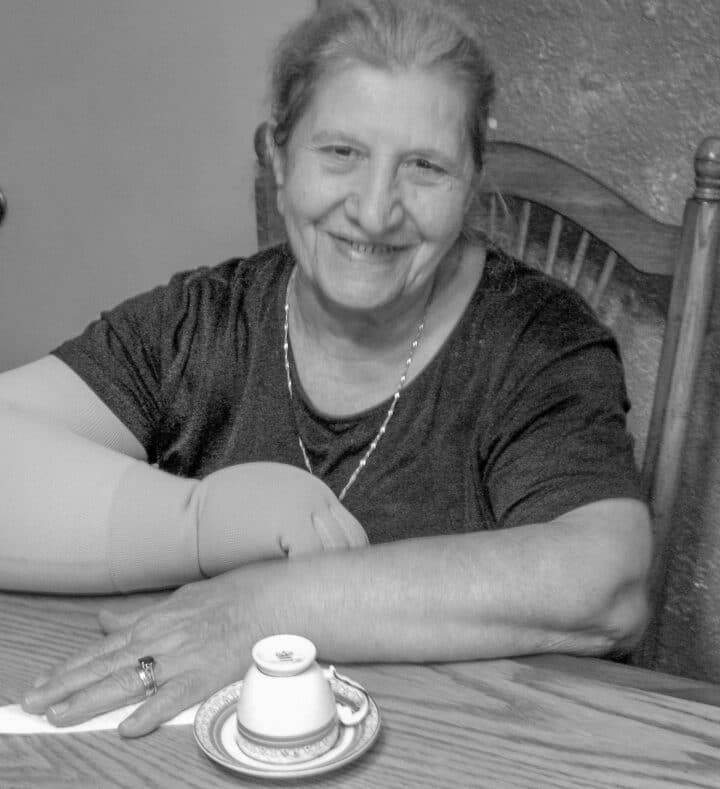
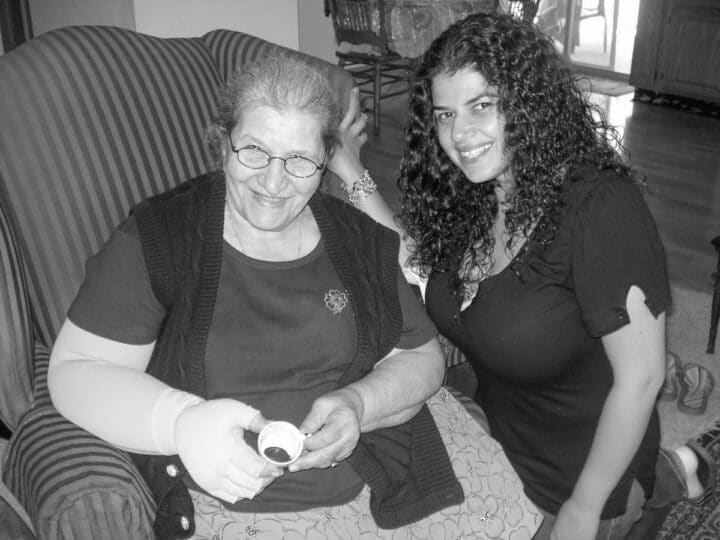
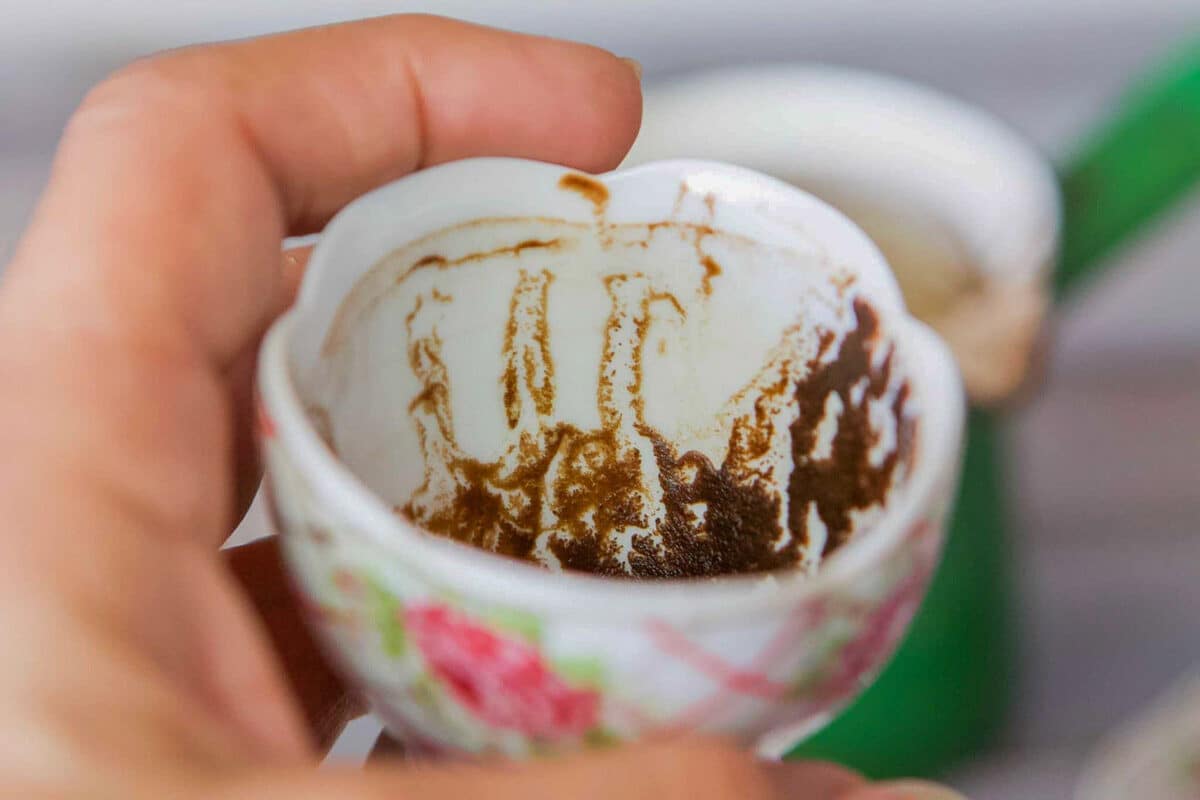

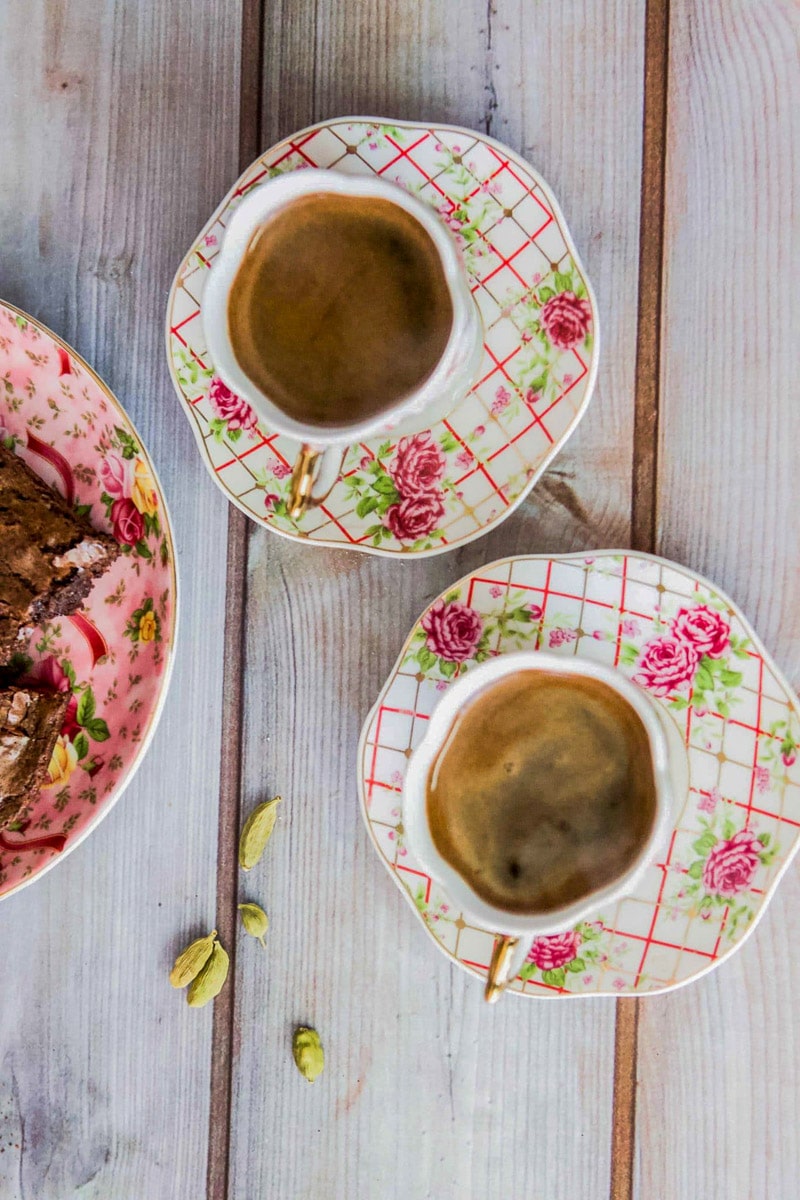
🫖 Related Recipes
If you enjoyed this Turkish coffee recipe, check out these other related coffee posts!
Love this recipe? Please leave a 5-star 🌟🌟🌟🌟🌟rating in the recipe card below & a review in the comments section further down the page.
Stay in touch with me through social media @ Instagram, Pinterest, TikTok, and Facebook. Don't forget to tag me when you try one of my recipes!
📖 Recipe
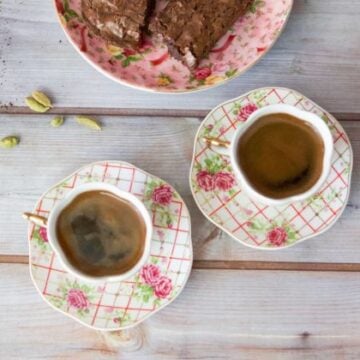
Turkish coffee Recipe
Ingredients
- 2 teaspoon Turkish coffee (ground arabica beans) (with cardamom)
- ⅔ cup water
- 1 teaspoon sugar (or Truvia)
Instructions
- Mix coffee, water, and sugar in an ibrik or Turkish coffee maker.
- Stir over medium flame, occasionally lifting the ibrik off of the flame to keep your hand from burning, as you stir.
- When the coffee begins to rise to the surface remove from heat and allow to recede. Repeat this step a few times. This develops a richer flavor.
- Spoon some of the foam into each demitasse cup. Divide the remaining coffee between the two cups.
- Allow the coffee to rest for a few minutes. This will help the sediment to settle to the bottom of the cup. Enjoy!
Notes
- You will need one heaping teaspoon of Turkish coffee, one demitasse cup of water (or ⅓ of a cup), and ½ to 1 tsp. of sugar per cup.
- I make a minimum of two cups at a time, even if I'm the only one having some. To accomplish this, I use 2 demitasse cups of water, 2 heaping spoons of coffee, and 1 teaspoon of sugar (or a packet of Truvia).
- To make more servings, just increase the coffee and water by one part, and the sugar by ½ to 1 part. You might even want less sugar than that, it's a matter of personal preference.
- You will need to lift the ibrik off the flame occasionally to keep your hand from burning, as you stir. Stop stirring when bubbles start forming along the edges of the ibrik, and the foam starts rising to the surface.
- We call the foam that rises to the surface "pata" which means "face" in Assyrian. This foam is highly desirable. Your goal should be to divide the foam between all the servings.


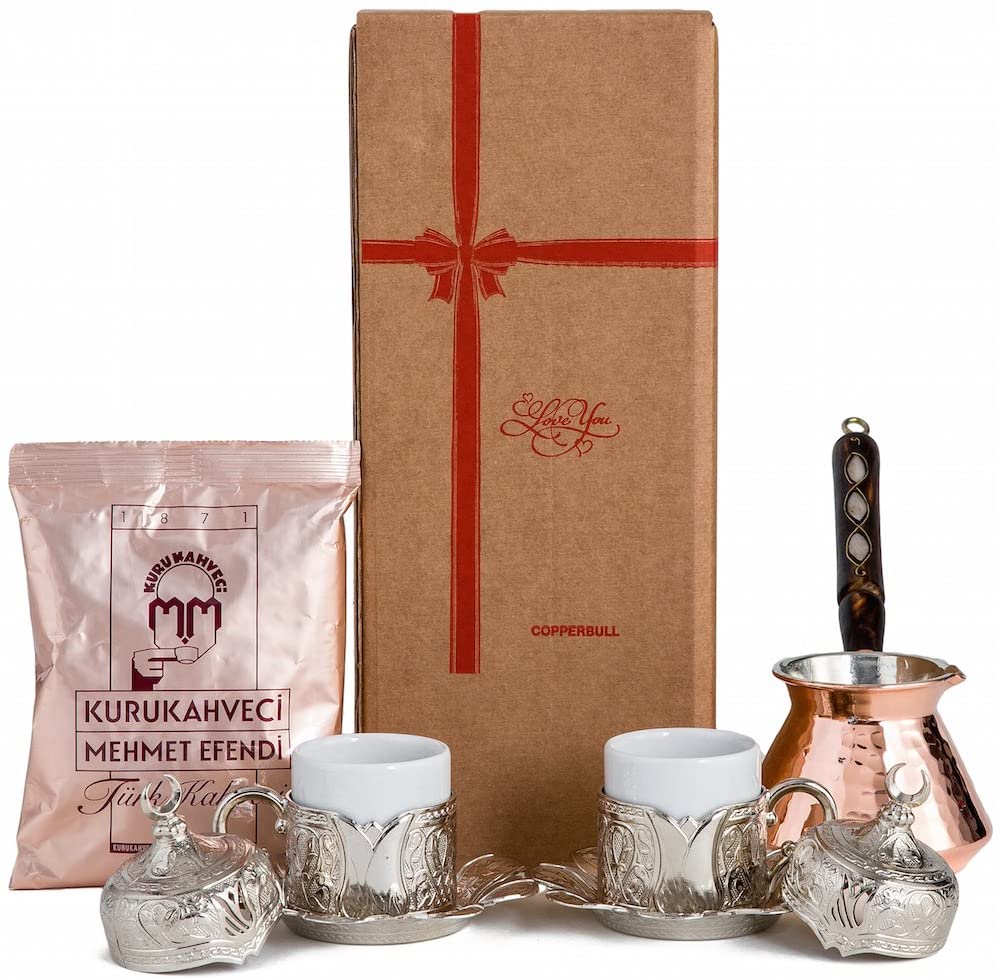
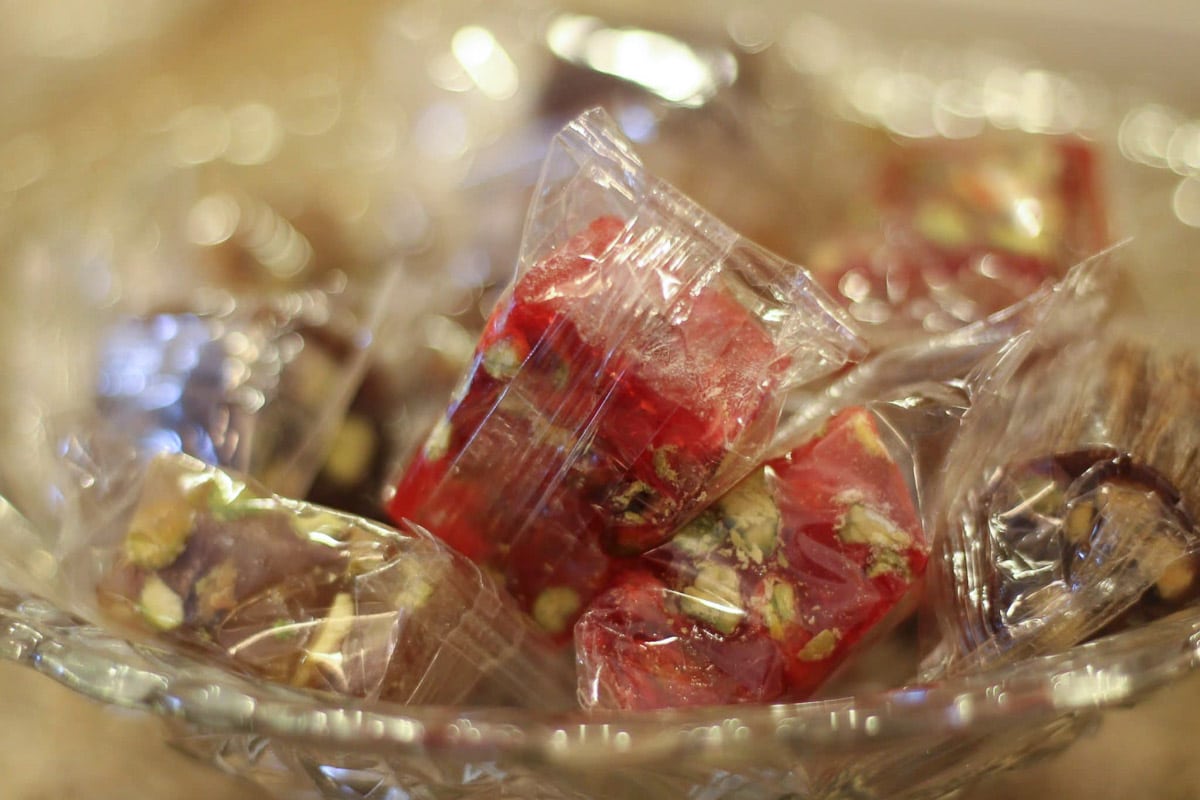




Comments
No Comments